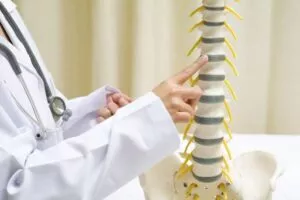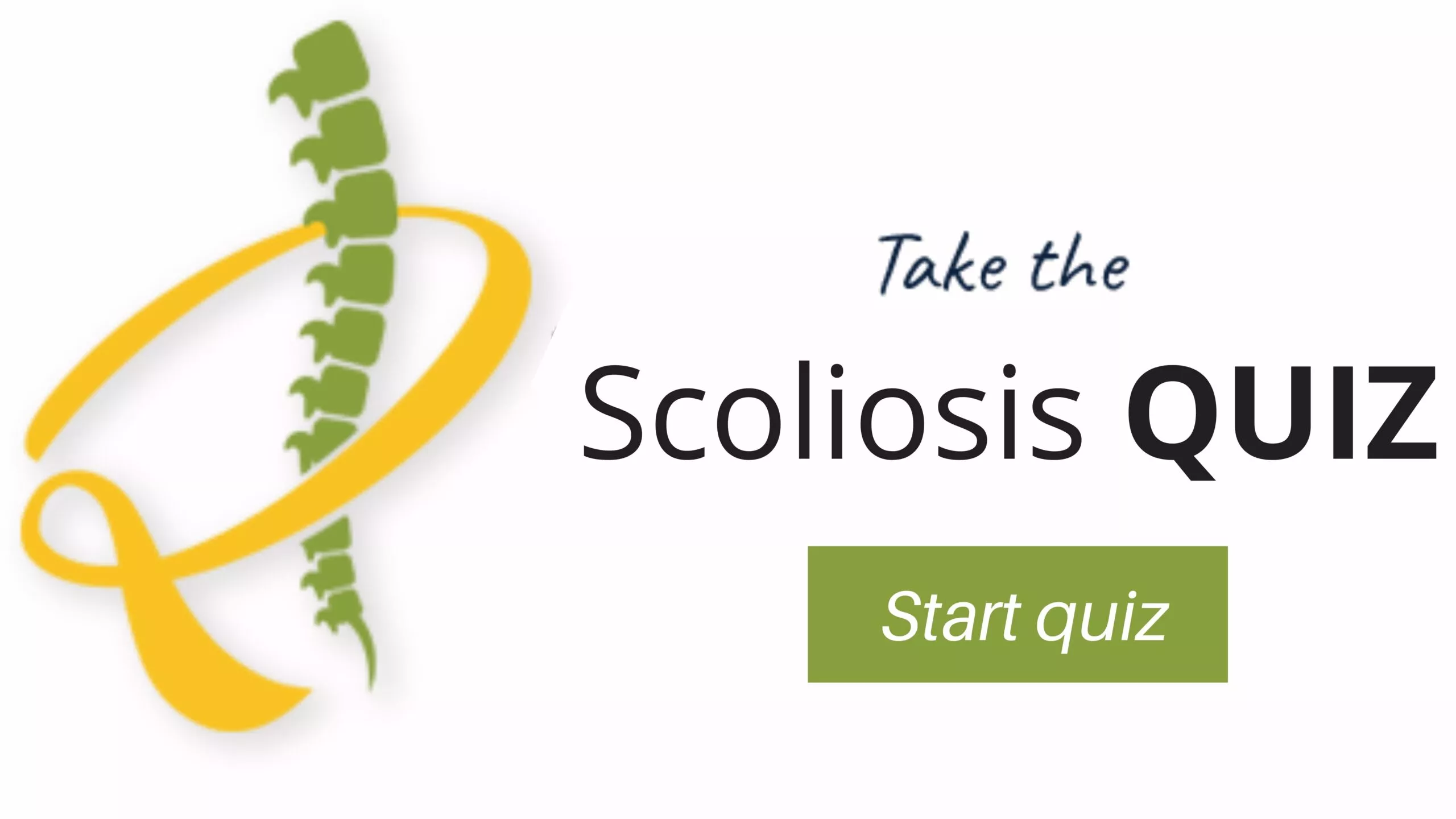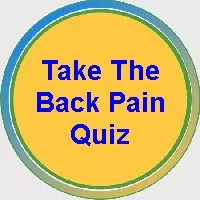
Our Spine Center is staffed with Doctors, Specialists, Surgeons, Technicians, and the very best nurses in the world.
Bone Spurs
 Bone spurs, also called osteophytes, are bony outgrowths that can grow on the spine and around or within joints. The body can attempt to heal the afflicted region when bones, ligaments, or tendons in the spine are injured or inflamed. It does this by catalyzing bone growth through either ossification (if the stimuli affect a bone) or calcification (if the stimuli affect a tendon or ligament). Osteoarthritis (degeneration of the cartilage between bones that causes them to rub against each other), trauma, thinning or degenerative discs, ligament inflammation or tears, and spinal stenosis are just a few disorders that can harm or irritate bones.
Bone spurs, also called osteophytes, are bony outgrowths that can grow on the spine and around or within joints. The body can attempt to heal the afflicted region when bones, ligaments, or tendons in the spine are injured or inflamed. It does this by catalyzing bone growth through either ossification (if the stimuli affect a bone) or calcification (if the stimuli affect a tendon or ligament). Osteoarthritis (degeneration of the cartilage between bones that causes them to rub against each other), trauma, thinning or degenerative discs, ligament inflammation or tears, and spinal stenosis are just a few disorders that can harm or irritate bones.
The presence or absence of symptoms from bone spurs will primarily rely on their origin and rate of development. You could suffer pain, tingling, stiffness, numbness, and weakness in the afflicted location if they impinge on a spinal nerve. X-rays and MRIs are two common imaging methods used to find them. Bone spurs are often not treated unless they are causing symptoms. Decompressing nerves, reducing inflammation, and treating symptoms are the goals of treatment.
Bone Spur Identification
Osteophytes are different from enthesophytes, which are bony projections that resemble hooks that form at the ends of ligaments or tendons that bind bones together (which connect muscles to bones). Enthesophytes can result from degenerative arthritis, tendonitis, ligament tearing, inflammation at the attachment place of tendons or ligaments, or tendonitis. Osteophytes are distinct from syndesmophytes, which are ligaments that run parallel to the spine and become calcified or hardened. As a result, the surrounding vertebrae may fuse together to form a “bamboo spine,” which is when they form a single, cohesive unit. As opposed to marginal syndesmophytes, which form along the margins of the vertebrae, non-marginal syndesmophytes refer to ligament hardening that occurs outside of the vertebral margin. In addition to these bodily parts, bone spurs can also develop in the feet, shoulders/rotator cuff, knees/heels, ankles/ankles, elbows, wrists/hands, hips/shins, and heels.
Questions and Answers.
What are Bone Spurs
Bone spurs, also known as osteophytes, are bony outgrowths that develop on the edges of bones. They typically occur when two bones meet in a joint. Bone spurs can form in various parts of the body, including the spine, knees, shoulders, hips, and hands. Doctors associate them with degenerative conditions such as osteoarthritis, where the cartilage between the joints wears down, leading to the growth of extra bone.
What are the Symptoms of Bone Spurs
The symptoms of bone spurs can vary depending on their size, location, and the structures they affect. In some cases, bone spurs may not cause any symptoms at all. However, when they press against nearby tissues, they can lead to pain, inflammation, and restricted movement. Common symptoms include joint pain, stiffness, swelling, and tenderness. If bone spurs develop in the spine, they can compress nerves, resulting in symptoms like radiating pain, numbness, and tingling in the affected area.
How are Bone Spurs Treated
The treatment for bone spurs focuses on relieving symptoms and managing the underlying cause. In our practice, we use non-surgical approaches first. These may include:
- Medications: Over-the-counter pain relievers, such as nonsteroidal anti-inflammatory drugs (NSAIDs), can help reduce pain and inflammation associated with bone spurs.
- Physical therapy: Specific exercises and stretches can improve joint mobility, strengthen surrounding muscles, and alleviate symptoms.
- Heat or cold therapy: Applying heat or cold packs to the affected area can help reduce pain and swelling.
- Orthotic devices: The use of shoe inserts or braces can provide support, cushioning, and stability to affected joints.
- Injections: Corticosteroid injections into the joint can provide temporary relief by reducing inflammation and pain.
In cases where conservative measures fail to provide sufficient relief, our doctors will suggest surgery to remove the bone spur or repair the affected joint. However, surgery is typically considered a last resort when all conservative treatments fail. The specific treatment approach will depend on the individual’s symptoms, the location of the bone spur, and the underlying condition causing it.
Regions of the Spine:
- Cervical Bone Spurs (Osteophytes)
- Thoracic Bone Spurs
- Lumbar Bone Spurs
Different Bone Spur Types by Affected Spinal Portion:
- Disc Osteophyte Complex
- Bridging osteophytes
- Anterior osteophytes
- Posterior osteophytes
- Endplate osteophytes
- Multilevel endplate osteophytes
- Foraminal disc osteophyte complex
- Facet Joint Osteophytes
Symptoms
Bone spurs often don’t hurt and are rather minor. They become noticeable when they develop around your finger joints because they might give the appearance of slightly knotted fingers. It may hurt to straighten your leg if you have bone spurs in your knee. In the shoulder, bone spurs can also develop and irritate your rotator cuff, leading to discomfort and swelling. Bone spurs in the hip can also become uncomfortable and restrict motion. In addition, the spine is one of the most typical locations for bone spur development. Spurs that develop inside a vertebra may impinge on the spinal cord or its nerve roots. Your back, arms, and legs may experience both pain and numbness as a result.
Treatments for Bone Spurs
Many people don’t even know they have bone spurs until they have an X-ray since they are frequently asymptomatic. There is no need for therapy if a bone spur does not produce any symptoms. On the other side, problematic bone spurs can limit a joint’s range of motion and bring on symptoms like pain, edema, stiffness, and inflammation. When a bone spur breaks off from a finger bone, it creates a loose body that floats in the joint space, limiting the ability to move the finger joint comfortably. Under your doctor’s supervision, you may have tried one or a combination of non-surgical therapies, but your pain and/or symptoms may still occur and become worse or are otherwise challenging to manage. Your doctor could suggest spine surgery as a last-resort option if that’s the case and/or neurological deficiency manifests. Problematic bone spurs can get treated in the following ways:
Non-Surgical Treatments
Spinal manipulation
When pain and inflammation caused by osteophytes are associated with abnormal alignment and movement patterns of the spine, alignment of the spine can help relieve symptoms. Physical therapists, chiropractors, and osteopaths adjust the spine by applying pressure to the vertebral skin with their hands or tiny devices. The objectives are to enhance function, lessen nerve irritation, and increase the range of motion. Not everybody should undergo spinal manipulation. Before beginning this course of treatment, your doctor will obtain a thorough medical history — followed by a physical examination and a discussion of the advantages and disadvantages of manipulation.
Weight loss
Weight loss can relieve strain on the spine, lowering friction at the facet joints of the vertebrae and lowering the probability of discomfort. It is especially beneficial to relieve strain on the lower back by achieving an adequate weight.
Injections
If other ways to improve symptoms are ineffective, your doctor may suggest injecting corticosteroids into your finger joints to reduce inflammation and relieve pain. A spinal injection procedure with contrast agents under fluoroscopy that targets a cause can help reduce pain and inflammation. Additionally, depending on whether a local anesthetic is used as part of the injection into the spine, this procedure can help the astute clinician identify or narrow down the cause of the patient’s pain.
Minimal duration and rest
Limiting hand usage and avoiding movements like gripping, clutching, and pinching can help reduce discomfort and inflammation in the finger joints that have troublesome bone spurs.
Immobilization
To immobilize the finger joints and minimize discomfort and inflammation, wear a hand splint.
Ice
Ice therapy can help reduce discomfort and swelling in the joints of fingers with bone spurs.
Medication
Nonsteroidal anti-inflammatory medicines (NSAIDs), such as ibuprofen, are available over the counter and can help control symptoms and lessen discomfort. Your doctors may recommend certain medicines, such as muscle relaxants and nonsteroidal anti-inflammatory drugs (NSAIDs) to reduce pain and discomfort.
Rehabilitation
Your healthcare provider may refer you to physical or occupational therapy to improve the range of motion in your knuckles, increase strength and flexibility in your hand muscles, and use therapy to relieve pain, stiffness, and swelling. Physical therapy, exercises, and procedures performed by a chiropractor, osteopath, and physical therapist can help relieve back pain associated with osteophytes. These rehabilitation therapies attempt to restore spinal flexibility and strength, improve posture, and relieve nerve root compression.
Surgical treatment
Surgery may occur to remove the bone spurs or loose bodies aggravating finger joints if persistent discomfort occurs. A trapeziectomy, which removes the trapezium bone of the thumb and any bone spurs or loose bodies to enhance hand function, may also occur if there is significant osteoarthritis of the thumb joint. Furthermore, it is crucial to understand that bone spurs may recur over time since they are a typical sign of arthritis, which is still present and can worsen even if a bone spur is removed.
You might need to have the bone spur surgically removed if it impinges on a nerve or seriously restricts your range of motion. If the bone spur occurs in the spine, our doctors may use a “spacer” on the afflicted vertebra in order to prevent the osteophyte from pushing on a nerve. With arthroscopic surgery, which employs specialized equipment to access the joint through incredibly small incisions, our surgeons can remove bone spurs when they cause pain and discomfort. Other approaches include:
- Use ice packs and cold compresses after engaging in weight-bearing exercises.
- orthotic inserts that support the arch (specifically for treating heel spurs)
- injections of cortisone to reduce pain, stiffness, and inflammation
- nonprescription painkillers
- stretching activities as part of physical therapy, especially before bed
- Resting the foot, especially after weight-bearing exercises
- Using a walking boot to ease the strain on the injured foot
Spine Surgery for Bone Spurs
If a spinal cord or nerve compression is resulting in persistent pain and discomfort and/or a loss of motor or sensory function, your doctor will recommend spine surgery. Removing tissue can reduce pressure on the spinal cord and/or nerve roots after surgery for bone spurs. Examples include:
Bone spur removal
In this procedure, bone spurs from the vertebra are removed using specialized instruments. Also, a surgeon could advise an alternative surgical technique, such as a laminectomy or foraminotomy, due to the possibility of the bone spurs returning and the possibility that other factors besides bone spurs are contributing to symptoms.
Laminectomy
An operation called a laminectomy is intended to reduce central spinal stenosis-related pressure on the spinal cord. The lamina appears at the rear of the spine and is a piece of the afflicted vertebra, which is cut off during surgery. Thus with this procedure, the spinal cord now has greater room because of the removal of this little section of the spinal canal wall.
Foraminotomy
The goal of a foraminotomy is to release pressure from a nerve root. An intervertebral foramen, a bony, hollow archway between 2 neighboring vertebrae, is where every nerve root exits the body. A foraminotomy enlarges the foramen space by removing or shaving down bone tissue surrounding it. By expanding the nerve root’s space, this treatment relieves nerve root compression. The degree of spinal degeneration, the patient’s general health, his or her dedication to rehabilitation, and other criteria determine whether or not a procedure may lessen or eliminate back or neck pain and other problems. The surgeon’s knowledge and experience play an important part in how fast the patient will recover. Finally, please note that our renowned surgeons at Southwest Scoliosis and Spine Institute are among the nation’s best.
Why Choose the Southwest Scoliosis and Spine Institute?
The following are just a few of the many reasons why patients might choose us.
- Expertise in the spine: The team of specialists at Southwest Scoliosis and Spine Institute is comprised of spine experts. They specialize in the diagnosis and treatment of spinal conditions, ensuring the best possible care for their patients.
- Cutting-edge technology: Our practice uses the latest technology and techniques to diagnose and treat a wide range of conditions. In addition, we use minimally invasive procedures that reduce pain and promote faster recovery.
- Comprehensive care: Our practice offers a full range of services, from diagnostic imaging and physical therapy to surgery. We ensure that patients receive complete, seamless care for their spinal conditions.
- Dedicated facilities: Southwest Scoliosis and Spine Institute is dedicated to providing patients with a safe and comfortable environment.
Finally, surgeries to correct idiopathic scoliosis are complex and multi-step procedures. Our Southwest Scoliosis and Spine Institute surgeons, with offices in Dallas, Plano, and Frisco, Texas, are specially trained and have years of experience performing these types of spine surgeries. We have seen over 100,000 patients and have performed over 16,000 operations. If you or your loved one is experiencing back pain, we strongly urge you to call us for an appointment, and we will see you in less than 24 hours.
____________________
We’re here to help STOP THE PAIN
If you or your loved one suffers from back pain from a spinal condition, we can help. Call Southwest Scoliosis and Spine Institute at 214-556-0555 to make an appointment today.



